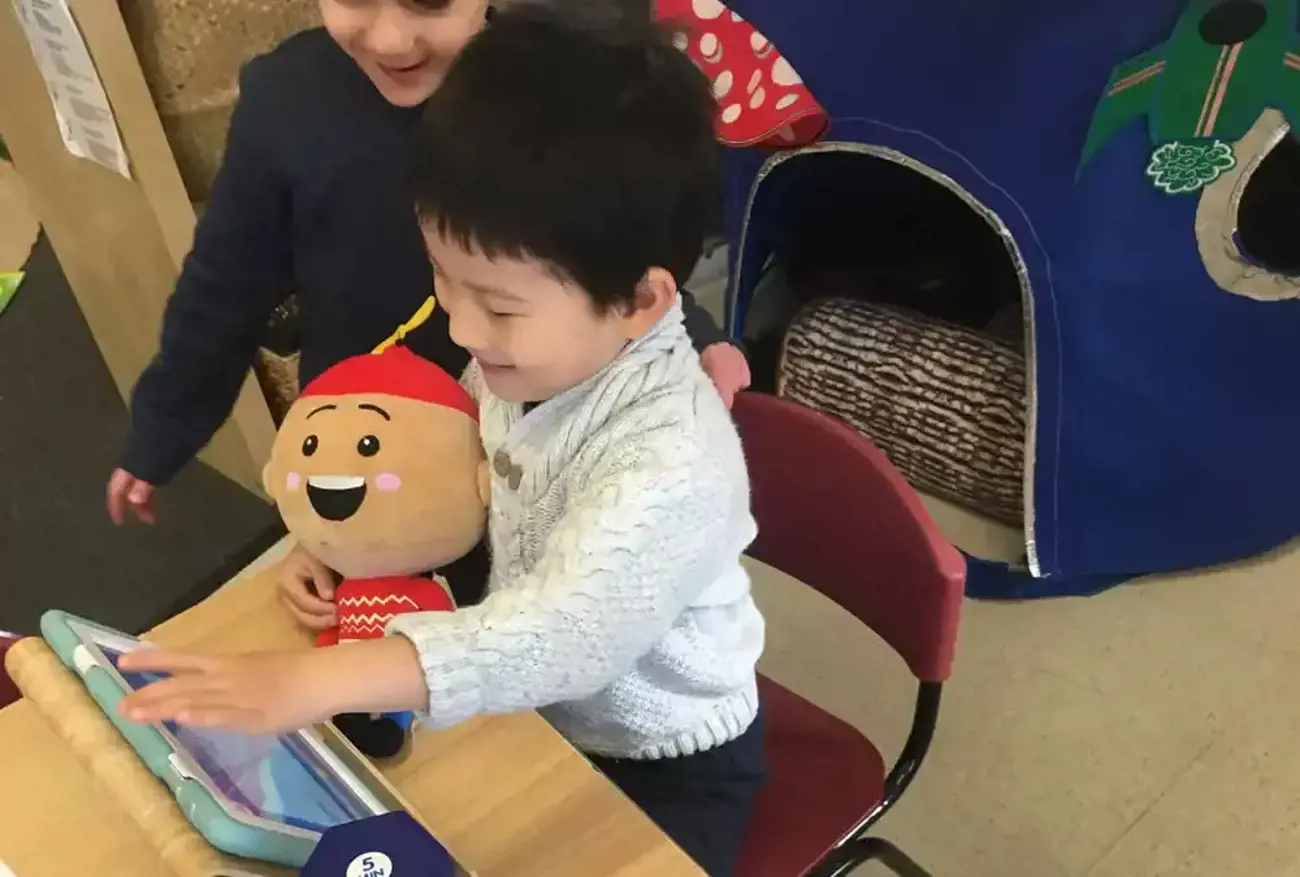This week Jennifer Koutoulas, the Director of Kids & Co Preschool in Hurstville Grove has written an article about her service's experience with the Early Learning Languages Australia (ELLA) program.
How our involvement with ELLA began
Kids and Co Pre School joined the ELLA program trial in 2016. Access to this program required children's use of one form of digital technology, an iPad, and the choice of one of several languages. We chose Chinese (Mandarin).
Discussions with parents: allaying concerns/ Taking parents' views seriously
We spent a great deal of time talking to families before we started the trial. Many were interested in giving their children the opportunity to access both a form of digital technology and learn a second language. Some parents expressed the importance of this in our globalised world. Some who spoke Mandarin felt welcomed and our connection with them was strengthened.
Some other families were more reluctant about the ELLA program, expressing concerns about screen-time. We explained the program in detail, assuring them that their child did not have to participate if they disapproved of regular digital access. Most of these parents were further reassured when we explained the correlation between the ELLA program and the learning outcomes of the Early Years Learning Framework, and ELLA's benefits to their child's transition to school. Other parents allowed their children to participate after observing its use.
Four years along …
We are now in our fourth year of delivering the program, joining more than 3,500 other early childhood education services in Australia. During this time, we have seen an organic change in our children's interaction with digital technologies. We believe this is due to consistency of use, a program specifically designed for children, and our move from a more structured approach to the use of ELLA apps to provide a greater freedom of their use throughout the day.
ELLA's positive effects at our service
Children at Kids & Co access the apps for approximately ten minutes a day. Educators co-learn with them, using children's interests to develop ideas for exploring learning opportunities in the environment.
As children are able to use the iPad anywhere in our preschool, they pre-plan how, where, when and with whom to access this kind of digital technology for content use or for other purposes such as taking photos.
Last year some children collaborated to explore design apps and used them to decorate photos.
We see the older children in our mixed-age setting modelling appropriate digital use practices for younger children. This includes using the new language and engaging in social and cultural experiences.
In our library area we see children reading, or being read to by an educator, while others engage with language using the ELLA apps on an iPad.
Turn-taking? Easy
We use a sand timer to make sure children share the iPad and don't spend too much time on-screen. Children check this timer to monitor their own use, and other children remind them if they sneak some extra time! The educators do not need to intervene.
Our educators are relaxed when interacting with children about the use of the iPads because this technology is consistently available to them, and is no longer a novelty. Educators guide and explore different uses based on the children's responses and interests.
Technology's delights: taking photos of Mum, and more
Recently, as a mum entered the service, her child used the iPad to take a photo of her. The mum looked surprised and smiled, then remarked, 'Wow, that's really good!' She then encouraged her child to take more photos as she moved freely around in the setting.
This experience led the mother to understand her child's ability to use digital technologies. At home they use it to communicate with relatives living overseas. For us, it confirmed the importance of understanding each family's views on digital technologies and how they might be used at home.
Understanding expectations
Another aspect this experience highlighted is the importance of each family's expectations of their child. Knowing how, when and if, children use any forms of digital technology at home will determine how we guide them individually. This understanding is echoed in the Early Childhood Australia (ECA) Statement on young children and digital technologies (Edwards et al. 2018), which reminds educators how important it is to understand family values and home practices when guiding their use of digital technologies in their setting:
"Some families may view digital technologies as useful tools for accessing and enjoying digital content and information. Other families might appreciate digital technologies as a way of staying in touch with distant family members. (Edwards et al. 2018, p. 7)."
The ECA Statement provides educators with informative guidelines to support pedagogical practices when we are implementing digital technology use for young children. This Statement is a valuable reference tool, provided free of charge from the Early Childhood Australia website. I highly recommend it to educators, directors, service providers, and managers in early childhood education.

































